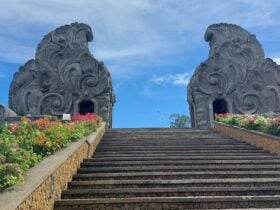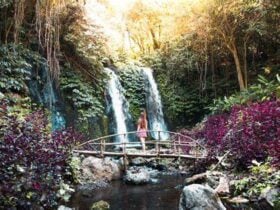Jatiluwih Rice Terraces Bali
Visit Bali's beautiful Jatiluwih Rice Terraces, which are a UNESCO World Heritage site known for their lush vegetation and traditional Subak water management system. Find out why this place is great for learning about other cultures, enjoying beautiful scenery, and getting away from it all. Ideal for tourists who want to experience culture and environmentally friendly tourism.

With their location in the middle of Bali, the Jatiluwih Rice Terraces show off both the island’s stunning natural beauty and its long history of farming. The UNESCO World Heritage site covers a large area of green land that gives tourists a beautiful view of what is probably the world’s most beautiful and well-designed rice field terraces. This blog post talks about the history of Jatiluwih and its integrated water management system, which is called Subak. It also talks about why you should visit, how much it costs, important tips for visitors, and commonly asked questions.
The Past and Present of the Jatiluwih Rice Terraces and Subak

Balinese words for “truly marvelous” can be found in Jatiluwih. This village really lives up to its name, with more than 600 hectares of rice fields that follow the shape of the Batukaru mountain range. These rice terraces are the best example of Subak, which is a traditional way for Balinese people to work together to control water that goes back to the 9th century. This system takes water from volcanic lakes to the rice fields through a complex web of canals, tunnels, and weirs. It is based on the unique philosophical idea of Tri Hita Karana, which connects the spiritual, human, and natural worlds. This idea has been a part of Bali’s culture for hundreds of years and has helped create a fair and sustainable system for managing water in the community.
Why Should You Go to Jatiluwih Rice Terraces?
Beauty of Nature: Some of the most beautiful views in Bali can be found in Jatiluwih. Landscape photographers and people who love nature will love this place.
As a cultural insight, going to Jatiluwih gives you a chance to see an old and effective way of managing water that is based on the Balinese philosophy of balance between people, nature, and the spiritual world.
Relaxing Getaway: Jatiluwih is not as busy with tourists as some other Bali spots, so it’s a great place to get away from it all. You can walk, ride a bike, or just enjoy the peaceful atmosphere of Bali.
Sustainable Tourism: When tourists come to Jatiluwih, they help a type of tourism that helps local people keep their traditional way of life alive and protects the environment.
How much does it cost to get into Jatiluwih Rice Terraces?
International visitors must pay IDR 40,000 to enter Jatiluwih, while local visitors only need to pay IDR 20,000. This fee goes straight toward maintaining the terraces and the Subak system. This keeps the cultural landscape alive and keeps it safe for future generations.
What Should You Know About Jatiluwih Rice Terrace Before You Visit?
Put on the right clothes. The weather in Jatiluwih can be cooler than along the coast, so bring a light jacket or wear layers.
Be kind to the environment. When you visit the rice terraces, stay on the marked paths so you don’t hurt the fields or the irrigation systems.
When should you go? To avoid the heat of the middle of the day, the best times to go to Jatiluwih are early in the morning or late in the afternoon. Visiting during the growing or harvesting season can also give you a better understanding of the farming activities.
Bring What You Need: There aren’t many stores and restaurants in Jatiluwih, so it’s a good idea to bring water and snacks, especially if you want to go on a long trip or walk.
FAQ about Jatiluwih Rice Terraces?
Can people in wheelchairs get to Jatiluwih?
You can get to some parts of Jatiluwih, but the terrain can be tough. The main paths can be walked, but people who have trouble moving around might have trouble getting to the lower levels.
Can I go to Jatiluwih by myself?
You can go to Jatiluwih without a guide, yes. You can learn more about the Subak system and the past of the area, though, if you hire a local guide.
How long should I stay in Jatiluwih?
Spend at least half a day in Jatiluwih to get the most out of it. This gives you time to stroll around the decks and take it easy in the natural setting.
What kinds of things can you do in Jatiluwih?
Cycling tours go around the rice terraces and nearby towns, so you can do more than just walk and take pictures.
The Jatiluwih Rice Terraces are more than just a pretty place to relax; they are also a way to learn about Balinese culture and farming history. Jatiluwih is a great place to get away to the island’s traditional scenery, whether you’re interested in nature, culture, or just need a quiet place to relax.










Leave a Review